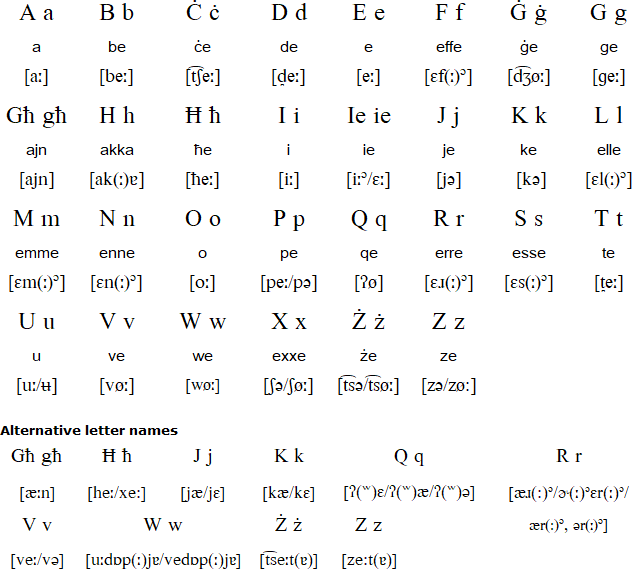Maltese (Malti)
Maltese is a Central Semitic language spoken by about 350,000 people on the Mediterranean islands of Malta and Gozo. The Maltese language developed from the Siculo-Arabic or Sicilian Arabic, a form of Arabic that developed in Sicily and Malta between the 9th and 14th centuries. Siculo-Arabic was extinct in Sicily by about 1300, but continued to be spoken in Malta and evolved into Maltese. The first reference to Malta having a distinct language dates from 1364, and the language is first referred to as lingua maltensi in the will of a certain Pawlu Peregrino from 1436.
There is also a theory that Maltese developed from Carthaginian or Punic, the language of Carthage, which was a form of Phoenician. This theory was endorsed by Giacomo Bosio in his book, Dell'Istoria della Sacra Religione et Illustrissima Militia di San Giovanni Gierosolimitano (The History of the Sacred Religion and Illustrious Militia of St John of Jerusalem), written between 1594 and 1602. As Carthaginian and Arabic are both Semitic languages that developed from the same roots, it is difficult to be sure whether Maltese words arrived via Carthaginian or Arabic.
The first known literary text in Maltese, II Cantilena, appeared during the 15th century, the first Maltese dicitonary was published in 1649.
As well as the Arabs who began taking over Malta in 870 AD, Malta was occupied by Norman-speaking Normans from 1090, and between 1530 and 1798 by the Knights Hospitaller of St John who spoke French, Spanish, Italian, Portuguese, Latin and German. In 1800 Malta became a British colony and the British tried to replace Italian with English as the local language. As a result, about half of the vocabulary of Maltese comes from Sicilian and Italian, and a fifth comes from English. Maltese also contains quite a bit of vocabulary from Norman and French.
After Malta become independent in 1964 both English and Maltese were given official status and Maltese became the national language of Malta. Today Maltese is used in most sectors of public life, including parliament, the church, the press and other media, and in general conversation. English is generally the preferred medium of instruction in schools, especially at the higher levels of the educational system.
| A a | B b | Ċ ċ | D d | E e | F f | Ġ ġ | G g | Għ għ | H h |
|---|---|---|---|---|---|---|---|---|---|
| a | be | ċe | de | e | ef | ġe | ge | ajn | akka |
| Ħ ħ | I i | Ie ie | J j | K k | L l | M m | N n | O o | P p |
| ħe | i | ie | je | ke | elle | emme | enne | o | pe |
| Q q | R r | S s | T t | U u | V v | W w | X x | Ż ż | Z z |
| qe | erre | esse | te | u | ve | we | exxe | że | ze |
A recording of the Maltese alphabet FROM
http://www.youtube.com/user/TheHuSkY1984
Maltese pronunciation

Notes
- għ is silent but pharyngealizes and lengthens vowels
- h has a simliar function to għ
- għ and h at the end of a word are both pronounced as ħ
- għh = ħħ
- Final consonants are devoiced: b = [p], d = [t], ġ = [ʧ], g = [k], v = [f], ż = [s]
- i before għ, h, ħ or q = [iː]
- m followed by a consonant at the beginning of a word is pronounced im, e.g. mnejn = [imnejn]

No comments:
Post a Comment